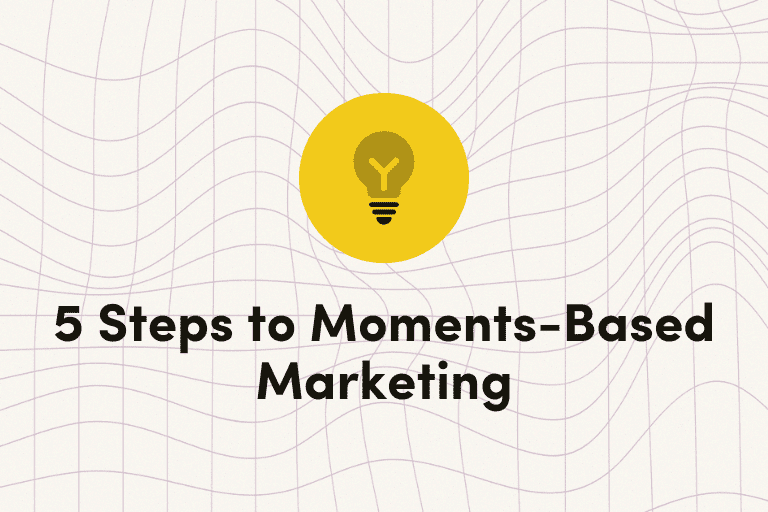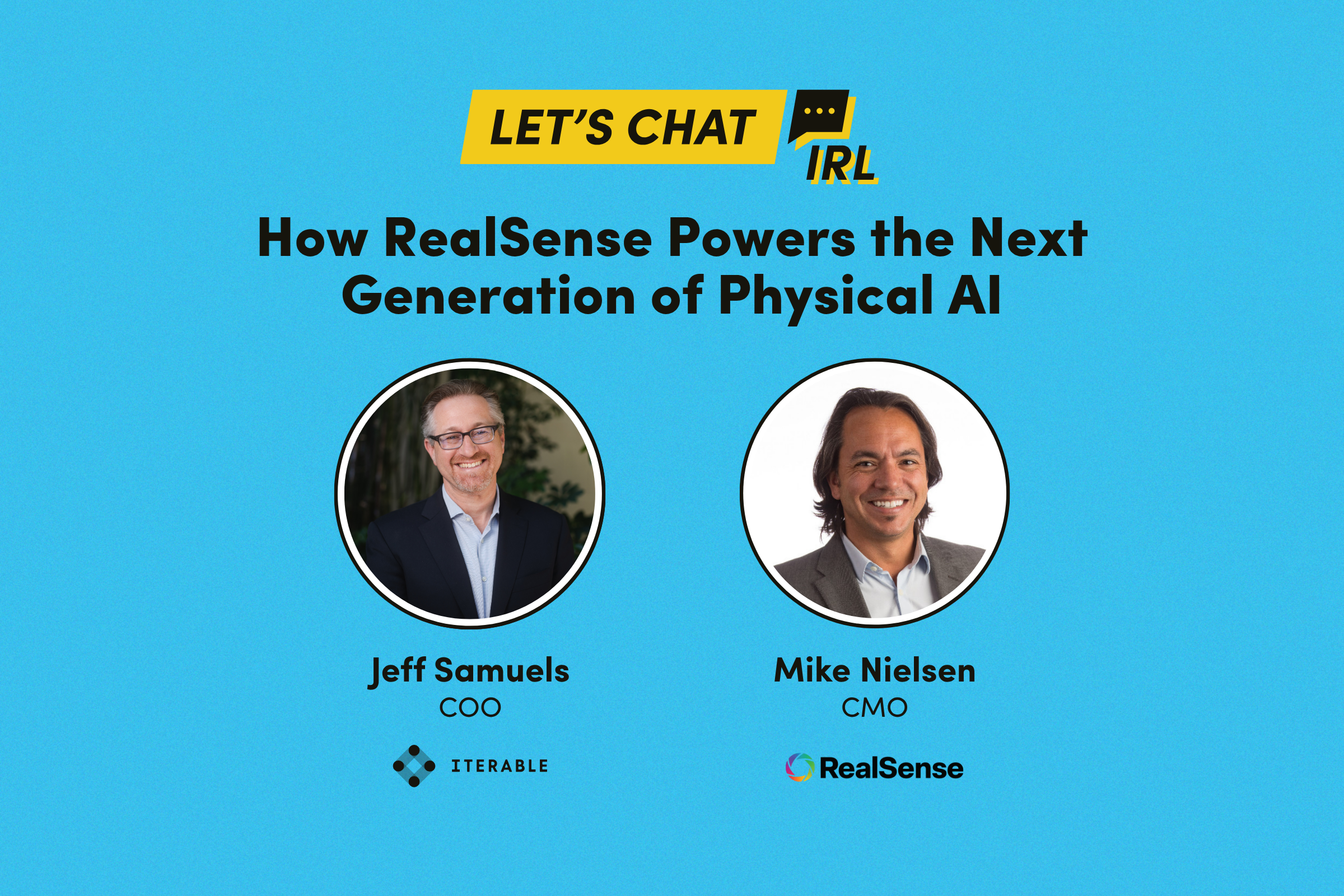In an era where AI is evolving from code to the physical world, RealSense sits at the intersection of innovation and intelligence—literally giving machines the ability to see, interpret, and act. In our latest Let’s Chat IRL session, Iterable’s Jeff Samuels sits down with Mike Nielsen, Chief Marketing Officer of RealSense, to explore how vision technology is transforming robotics, biometrics, and beyond—and what it means to lead marketing in a deeply technical world.
The Engineer Who Became a Storyteller
Before stepping into the CMO role, Nielsen was an engineer—a builder, network designer, and product innovator. His journey from hardware labs to marketing suites wasn’t a straight line, but that’s what gives him an edge.
“At RealSense, we’ve got a ton of super technical people, and I’m pretty technical, and I’m always playing catch up. So we’re a group of nerds, and it’s awesome” he says.
For Nielsen, marketing isn’t about simplifying the technology; it’s about connecting its depth to real-world impact. Understanding the customer’s environment, challenges, and goals allows him to bridge the gap between technical precision and human experience.
Giving Machines Sight—and Context
So, what does RealSense actually do? In simple terms, it builds the visual cortex for machines. Its technology powers depth and perception systems—the “eyes” of robots, autonomous vehicles, and biometric devices.
Using stereo cameras and advanced imaging, RealSense measures distance, shape, and volume with near-millimeter precision. This data lets robots move through complex spaces safely and intelligently. Whether it’s a factory robot navigating workers, a drone inspecting hazardous sites, or an assistive device helping a visually impaired person understand their surroundings, RealSense provides the perception layer that turns data into action.
And they’re seeing incredible use cases, from helping blind people “see” using sound-based translation, to monitoring grain silos or measuring sleep patterns without invasive sensors—the possibilities are endless.
From AI Models to Physical AI
AI isn’t staying on screens—it’s entering the physical world. Nielsen calls this evolution “physical AI”: intelligent systems operating in real environments to make human life safer and simpler.
The friction is disappearing. Just as AI speeds up how marketers work, physical AI will do the same in the real world. Machines will move with human-like confidence, adapting faster and acting smarter.
That progress depends on data—and RealSense delivers it in ways that enable not just automation, but empathy. By helping machines understand context, RealSense helps humans trust automation.
The Marketer’s Mandate in an AI Age
Nielsen’s advice to marketers is simple but profound: use the tools and think end-to-end. “Start experimenting,” he says. “Try to think of yourself as a marketer, as a mini CMO for your entire product line. You’ve got to think of this in the context of how your story is going to be executed throughout the entire continuum.”
As AI reshapes both marketing and the physical world, RealSense embodies what’s possible when engineering meets imagination—and when marketing helps the world see what’s next.
































